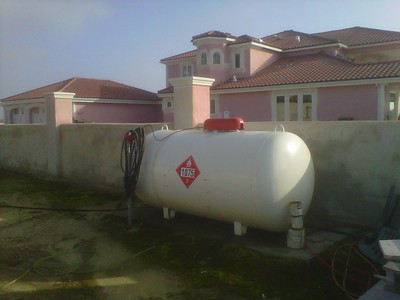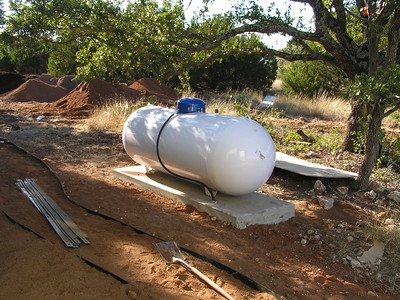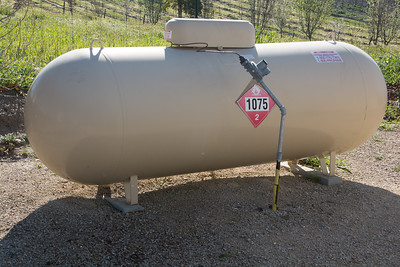
If you’re looking to learn more about propane as an efficient and versatile fuel source, you’ve come to the right place! Propane has become increasingly popular in recent years due to its affordability, eco-friendliness, and various applications.
It’s essential to understand the vaporization rate of propane, especially when dealing with larger tanks, such as 500-gallon tanks.
This article offers a friendly, detailed, and comprehensive guide to understanding the rate of a 500-gallon propane tank.
By the end of this article, you’ll have a solid understanding of the factors that affect rates, how to calculate them, and how to ensure optimal performance in various applications.
So, buckle up, and let’s dive, read on…
Read this: Where Can You Buy Used 500 Gallon Propane Tank for Sale?
Factors Affecting Propane Vaporization Rate
To better understand how propane rates work, we must first examine the different factors that influence these rates. One of the most significant factors is ambient temperature. As the temperature outside your tank increases, the propane inside will vaporize more rapidly.
This is because the heat from the environment is transferred to the propane, causing it to change from liquid to vapor form. On the flip side, when temperatures drop, the rate will decrease due to the reduced heat transfer. This can sometimes lead to issues with your propane-powered appliances, as they may not receive enough propane vapor to function correctly.
Another factor to consider is the size and surface area of your tank. The larger the tank, the more propane it can store, and the more surface area it has for heat transfer.
This means that larger tanks, like the 500-gallon tank we’re discussing, will typically have higher rates. However, it’s essential to remember that the relationship between surface area and rate isn’t linear, and other factors can influence the overall rate.
The fill level of your propane tank also plays a crucial role in determining its rate. A tank that’s only partially filled will have a lower rate than a full tank, simply because there’s less propane available to vaporize. It’s important to maintain an optimal fill level in your tank to ensure efficient gasification and prevent any interruptions in the supply of propane vapor to your appliances.
Lastly, the material and insulation of your propane tank can also affect its rate. Certain materials can retain heat better than others, promoting more efficient vaporization.
Additionally, insulating your tank can help maintain a consistent temperature inside the tank, improving the process. Some tanks come with built-in insulation, but you can also add insulation to your tank to enhance its performance.
Read this: 500 Gallon Propane Tank Dimension: Is This the Size You Need?
Calculating Rate for a 500-Gallon Propane Tank
Now that we’ve covered the factors that influence the rate let’s discuss how to calculate this rate for a 500-gallon propane tank. The standard formula used for calculating rate is as follows:
Vaporization Rate = (Surface Area * Heat Transfer Coefficient * Temperature Difference) / Latent Heat of Vaporization
To apply this formula, you’ll need to determine the surface area of your tank, the heat transfer coefficient (which depends on the tank material), the temperature difference between the propane and the environment, and the latent heat of vaporization for propane. Once you have these variables, you can plug them into the formula and calculate the rate.
For example, let’s say you have a 500-gallon tank with a surface area of 300 square feet, a heat transfer coefficient of 4 BTU/square foot/hour/°F, a temperature difference of 20°F, and a latent heat of vaporization of 184 BTU/gallon. Plugging these values into the formula, we get:
Vaporization Rate = (300 sq ft * 4 BTU/sq ft/hr/°F * 20°F) / 184 BTU/gallon
Vaporization Rate = 24,000 BTU/hr / 184 BTU/gallon
Vaporization Rate ≈ 130.43 gallons/hr
This means that under these specific conditions, your 500-gallon propane tank would disperse approximately 130.43 gallons of propane per hour.
Keep in mind that this is just an example, and the actual rate for your tank may vary based on the specific variables involved. It’s important to regularly monitor and adjust these factors as needed to maintain an efficient and consistent rate.
Importance of Vaporization Rate in Propane Applications
Understanding the rate of propane is crucial for various residential, commercial, industrial, and outdoor applications. In residential settings, propane is commonly used for space heating, water heating, and powering appliances like stoves and dryers. A consistent and efficient rate is essential to ensure that your home stays warm and your appliances operate smoothly.
In commercial and industrial settings, propane is often used in large-scale heating systems, power generation, and agricultural applications.
In these cases, maintaining an optimal rate is critical to ensure the efficient operation of equipment and processes. For instance, a reliable propane supply is necessary for uninterrupted power generation, while consistent heat is required for crop drying or greenhouse temperature control.
For outdoor and recreational use, propane is popular for grilling, outdoor heating, powering recreational vehicles, and providing backup power during emergencies.
In these situations, an efficient rate is vital to ensure that your equipment performs at its best, whether you’re cooking up a delicious meal on the grill or staying warm during a camping trip.
Ensuring Optimal Rate in a 500-Gallon Propane Tank
To maintain the best possible rate for your 500-gallon propane tank, it’s important to perform regular maintenance and inspections. This includes checking for leaks, assessing the tank’s structural integrity, and monitoring the propane level. By staying proactive, you can catch potential issues early and ensure that your tank is always in top condition.
Another key aspect of maintaining optimal gasification is adjusting the fill level of your tank according to demand. If you know you’ll be using more propane than usual during a particular period, you can increase the fill level to accommodate the increased rate. Conversely, if your propane usage is expected to decrease, you can lower the fill level to avoid waste and inefficiency.
Using appropriate tank materials and insulation can also help maintain an efficient rate. If you’re considering a new tank, opt for one made of a material with a high heat transfer coefficient.
Additionally, insulating your tank can help minimize temperature fluctuations and promote consistent gasification, regardless of the ambient temperature outside.
To Make a Conclusion
Understanding the vaporization rate of a 500-gallon propane tank is essential for anyone who relies on propane as a fuel source.
By taking the time to learn about the factors that influence rates, such as ambient temperature, tank size and surface area, fill level, and tank material, you’ll be better equipped to optimize your propane usage and ensure efficient performance in a variety of applications.
Calculating rates can seem intimidating at first, but with a little practice and a good understanding of the variables involved, you’ll be able to determine the rate for your specific tank with ease.
This knowledge will prove invaluable in residential, commercial, industrial, and outdoor settings, where maintaining an optimal rate is crucial for the smooth operation of your equipment and appliances.
By regularly maintaining your propane tank, adjusting fill levels according to demand, using appropriate tank materials, and insulating your tank, you can ensure that your propane system operates efficiently and consistently.
These practices will not only help you save money on fuel costs but also contribute to a more eco-friendly and sustainable lifestyle.

Mike is an experienced propane technician with over 15 years of professional experience in the field. He has dedicated his career to helping customers with their propane needs, from installation to maintenance and repair. Together with Jeremy, he co-founded this website to provide useful information and guidance to customers seeking reliable propane services.



